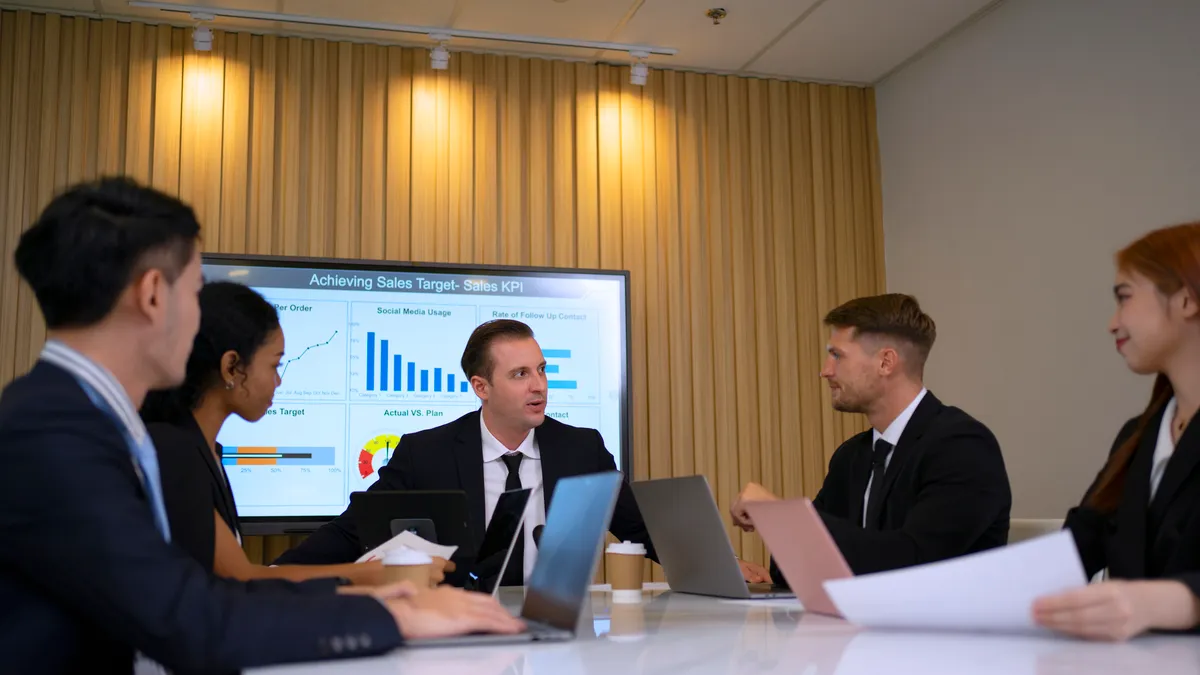The legal tech stack plays a role in the customer experience at online shopping giant Wayfair, says Andrew Moffett, head of product for the company’s legal team.
“One of the verticals that rolls up into legal at Wayfair is compliance,” Moffett said in a Cockpit Counsel webcast with Tim Parilla, chief legal officer of CLM software company LinkSquares. “So, everything from ensuring we don’t have products with lead-based paint or cotton from child labor around the world all the way to the end of the product life cycle — if there are recalls or damages — how do you take that data to help inform upstream so you’re continuing to improve the customer experience?”
The company is willing to spend the resources on the goal of integrating all of its technology, including the technology the legal team uses, throughout the organization so the data that’s generated benefits all of the functions, he said.
“We have thought partnerships across support [functions],” Moffett said. “What is marketing doing? [We use] tools that make sense across the company and not just within the legal sphere.”
Generous resources
Wayfair might be considered an outlier because it’s given its 50-person legal team its own legal tech support group. The group makes sure any technology the lawyers use enables them to work “at the top of their license” so they don’t waste time on mundane tasks, but also integrates with the other function areas within the organization.
“We’re about five deep now and operate like a tiger team,” Moffett said. “There are a lot of teams engaging with initiatives [driven by legal] but we also will help push initiatives that are for the legal team itself.”
For many companies, having that level of technology support for just the legal team would be a luxury. But for any general counsel, ensuring the legal tech stack is integrated is crucial, because specialized tech applications that exist in silos make it harder for legal leaders to see the bigger picture.
“Unification among legal tech products like e-discovery, e-billing, matter management, CLM, IP management, is holding legal teams back from participating with the business,” Parilla said.
Technology has reached the point where, for general counsel to be successful, it’s not enough just to be good at the law; they also have to bring data to the table so they can be part of the value conversation in the C-suite.
“With maybe a few rare exceptions depending on the type of company you’re in, if you’re not bringing data to the table, you’re not doing your job,” Parilla said. “You have to be able to quantify the contribution you’re making to the business.”
The challenge for any legal team is getting lawyer buy-in, since the technology is only as good as the degree to which it’s used.
“Imagine buying NetSuite and only 30% of your finance team uses it,” Parilla said. “Historically, that’s how legal teams have operated: ‘It’s more of a pain … for me to put this contract into this system or this matter into this matter management system, so I’m just going to look at it on my phone, go ahead and sign it and let the transaction go on.’ The problem with that is, you don’t actually get any of the benefits of how you’re using the system. The system is there to help you scale.”
At Wayfair, the legal tech team tries to steer clear of solutions that are novel at the moment but don’t make sense within the broader system of the team and of the organization.
In practice, that integration means a lawyer working on real estate matters can access the tools and data used by a lawyer working on litigation and vice versa.
“You’re allowing the thought leadership and brainstorming in legal verticals to have some overlap so you’re not getting stuck in your single lane,” Moffett said. “If you work in the litigation vertical, that doesn’t mean you’re completely separated from the real estate side. How do these two teams engage? What tools and best practices are they using to ease up their everyday tasks? Then you’re bringing in the broader businesses and have thought partnerships across support.”
That degree of integration enables attorneys to “work at the top of their license – the stuff they want to be working on,” he said.
And for those outside the function, you’re “democratizing access to legal, legal research or attorneys directly,” Moffett said, helping to enable the cross-functional integration that can improve the business as a whole.



















